|
|
|
|
High Speed Missile System ..
|
|
| U.S. Air Force Fact Sheet "PEACEKEEPER" ICBM 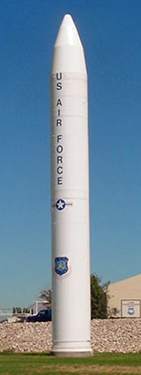 Peacekeeper PeacekeeperMartin Marietta LGM-118A "Peacekeeper" ICBM Propulsion: First Stage: Thiokol solid-fuel rocket motor; 500,000 lbs thrust; Second Stage: Aerojet solid-fuel rocket motor; Third Stage: Hercules solid-fuel rocket motor; Post-Boost Stage: Rocketdyne liquid-fuel rocket motor Diameter: 7 ft 8 in Length: 71 ft 0 in Weight: 195,000 lbs (at launch) Speed: 5,000 mph Range: 6,000 miles Service Ceiling: 500 miles Armament: Nuclear warheads Cost: $70,000,000 In November 1971, as the LGM-30G Minuteman III was being deployed, the Air Force released a report calling for even further improvements in the survivability, accuracy, range, payload, and targeting flexibility of the nation's intercontinental ballistic missile force. These refinements were required to keep pace with anticipated Soviet ICBM capabilities in the future. The initial development of an advanced new ICBM, the LGM-118, was started in February 1972 and it was soon designated "Missile X," or simply "MX." It was intended to eventually replace the Minuteman, with initial operational capability scheduled for 1985. By 1977 it was decided that the MX would be comprised of three stages powered by solid-propellant rocket motors and a liquid-fueled post-boost vehicle that would carry ten Multiple Independently-targeted Reentry Vehicles (MIRVs). The new ICBM would initially be housed and launched from existing Minuteman silos, while a mobile basing scheme would be developed later. The missile's guidance system would provide a degree of accuracy high enough to defeat even the hardest military targets. Several new technologies would increase the effectiveness of the MX system, including telescoping exit cones on the solid-fuel rocket engines to increase efficiency, Kevlar motor casings to reduce weight, and the cold launch method of missile launching (in which the missile is ejected from the silo by a tremendous jet of compressed air and the first stage rocket motor ignites at an altitude of about 150 feet, thereby causing far less damage to the silo than an in-ground launch). The contract for final assembly of the first fifty MX missiles was issued to Martin Marietta in April 1978 and in the next few months contracts for the rocket motors were issued to Thiokol, Hercules, Aerojet General, and the Rocketdyne Division of Rockwell. Full-scale development of the MX system began in September 1979. Congress did not like the idea of simply placing the MX in existing Minuteman silos due to the inherent vulnerability of fixed launch sites, so alternate mobile basing methods were explored, including both air and ground-based schemes. (One early plan called for air-launching the MX by carrying it aloft inside a specially-configured C-5 Galaxy cargo plane.) The first ground-based scheme considered was called Multiple Protective Shelters (MPS) and called for 200 missiles to be shuttled at random between 4,600 "soft" shelters (not hardened against nuclear blasts) spread out over remote sections of Nevada and Utah. The idea was that in order for Soviet ICBMs to defeat the MX system totally, all of the shelters would have to be destroyed, taking more than half of the warheads then in the possession of the Soviet Union. This meant that other prime military targets in the United States, including Washington, DC, would be protected from possible attack by the MX basing scheme. But government estimates ultimately proved that the total cost of the MPS strategy would be prohibitive -- over $37 billion in all -- forcing other basing options to be studied. Another less-expensive idea for MX basing was called "dense pack," in which 100 missiles would be emplaced in super-hardened silos spaced 1,800 feet apart. The theory was that during a full-scale nuclear attack on the United States the first wave of detonations over the closely-packed silos would predetonate subsequent incoming ICBM warheads, thereby protecting most silos by "nuclear fratricide." However, Congress did not approve this basing scheme. In fact, it voted to suspend funding for the program until a suitable basing scheme was proposed. Amidst this protracted debate, in November 1982 the LGM-118 MX missile was officially named Peacekeeper. In January 1983 the Reagan administration appointed the Scowcroft Committee to determine the best basing method for the Peacekeeper missiles. By that April a two-phase scheme had been proposed in which the LGM-118 would first be promptly deployed in modified Minuteman silos, and later a smaller, highly mobile ICBM would be developed and deployed to augment the silo-based Peacekeeper force. (Mobile rail garrisoning was the leading contender for deploying the second group of fifty Peacekeeper missiles, a scheme very similar to the "Project Big Star" train system investigated for Minuteman, but funding was never approved for the second Peacekeeper purchase.) Congress approved the Scowcroft Committee plan in May and flight testing began on June 18, 1983 with the first Peacekeeper launch. That September almost $5 billion was appropriated for building twenty-one missiles. Minuteman silo modifications soon got underway and the first Peacekeeper launch from a former Minuteman silo came on August 23, 1985. The first multiple-target test flight was successfully completed one year later. The first operational LGM-118A missiles were delivered to Francis E. Warren AFB in Cheyenne, Wyoming, in September 1986. Initial operational capability was achieved that December. Full deployment of fifty Peacekeeper missiles was reached in December 1988. With the signing of the second Strategic Arms Reduction Treaty (START II) in January 1993, MIRVed missiles were scheduled for elimination from the nuclear arsenals of the United States and the former Soviet Union. The Peacekeeper program was totally terminated, and the MIRVed Minuteman III was scheduled for rearmament with only one warhead per missile. It was agreed that in the year 2000 the United States would begin withdrawing the LGM-118A Peacekeeper from service, with phaseout to be complete by 2004. The Ogden Air Logistics Center at Hill AFB was assigned the logistics system management of the MX missile in September 1975 and still manages the program's logistics today. Since the Peacekeeper was assembled stage by stage in the launch silo, rather than placed intact into the silo as the Minuteman had been, Hill personnel were responsible for coordinating conveyance of the various components to the launch site and assembling them. OO-ALC personnel were also trained in program reliability, nuclear surety, and the specialized repair of the transportation equipment used to transport the Peacekeeper components. The OO-ALC Directorate of Maintenance also established a depot-level capability to repair various Peacekeeper components and support equipment. OO-ALC was assigned prime responsibility for the Peacekeeper Rail Garrison program, which would have consisted of twenty-five specialized trains, with two missiles per train, positioned on existing Air Force bases. Since the second group of fifty LGM-118As were never procured, the Rail Garrison system was never implemented. Hill AFB had several new facilities built in the 1980s for the Peacekeeper program, including a rail dock, a tranporter-erector repair facility, a fully functional test silo, a hazardous storage facility, and thousands of extra square feet of warehouse space. A special gantry crane was also installed to move missile motors from railroad cars to the loading dock. SOURCE: AF FACT SHEET Martin Marietta LGM-118A "Peacekeeper" ICBM - [Archived][DOT MIL site] |
|
| Boeing Company, “Final Test Report, Mobile Minuteman Train Test Program, ... Directorate of Operations, “Final Report of SAC Task Force, Project Big Star |
|
|
Project Big Star
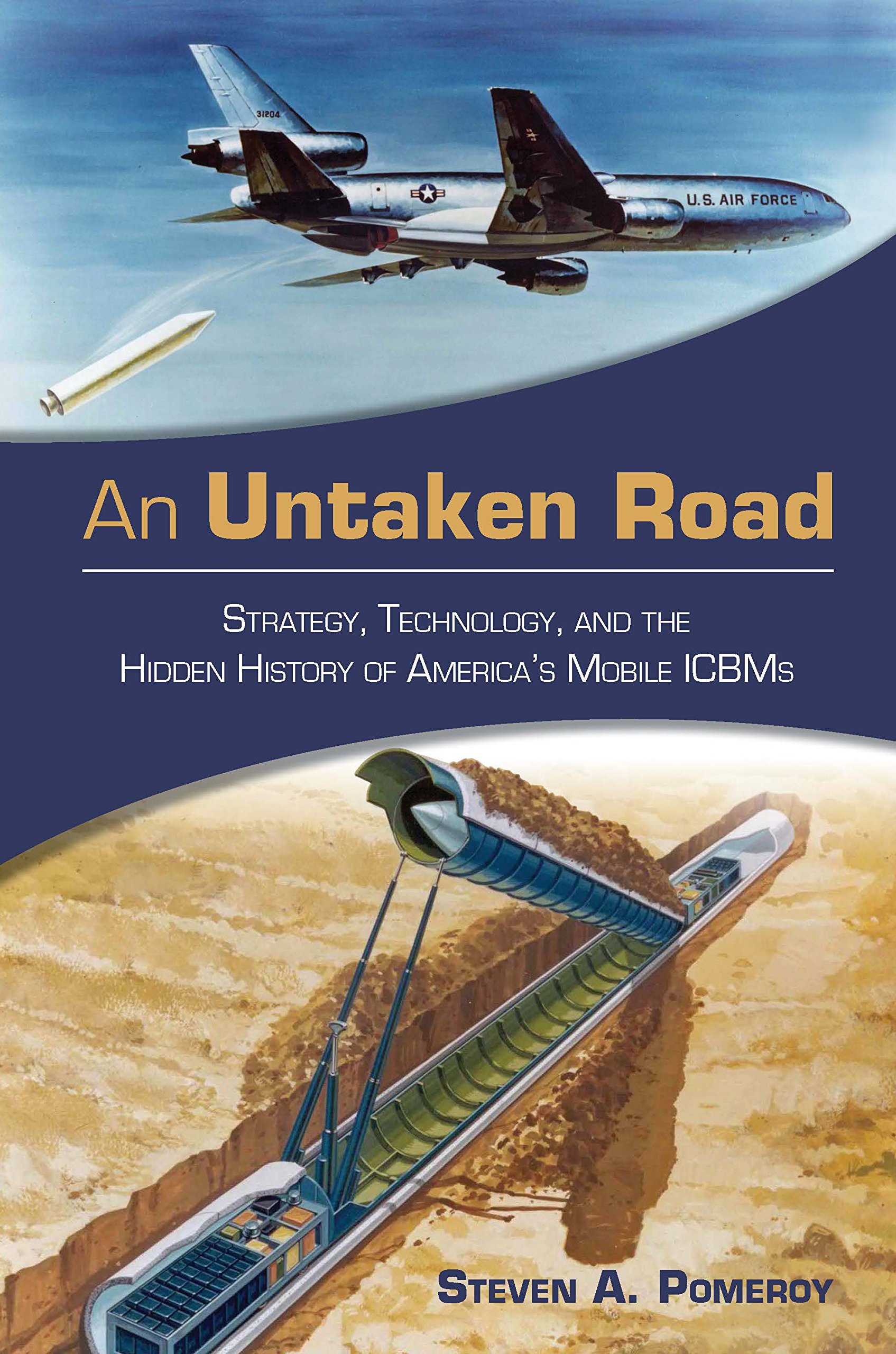 An Untaken Road: Strategy, Technology, and the Hidden History of America's Mobile ICBMs Hardcover – January 15, 2016 by Steven A. Pomeroy AMAZON
|
|
|
Minuteman Mobility Test Train
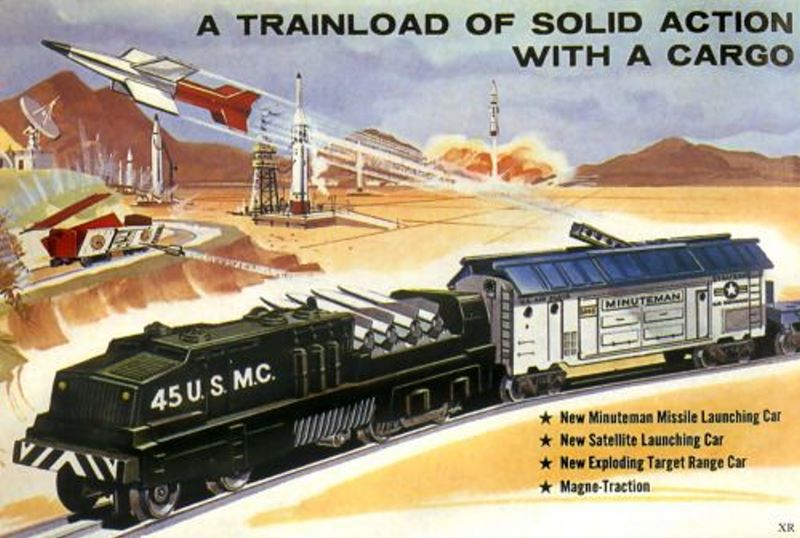 A Minuteman Mobility Test Train was a Cold War train for Strategic Air Command testing before deployment of planned trains for launching Minuteman missiles which were to allow periodic movement for security from targeting by the Soviet missile force. At the time, the trains had the heaviest railroad cars used on regular rail routes, and rail sidings were surveyed during the trains' 1960 Operation Big Star (surveyed sites were subsequently used in 1961 by different SAC trains for evaluating bomber accuracy.) Operation Big Star Operation Big Star was a series of US military exercises using 4 trains (of 6 planned) from the Hill Air Force Base rail terminal over "21 railroads in the Northwest and Midwest" during summer 1960. The USAF Ballistic Missile Division conducted the tests while SAC had operational control of the trains with a "SAC task force" in Utah and on the train, military personnel and "civilian engineering, maintenance and logistic representatives" (the last 3 of the 6 planned trains were to leave from Des Moines, Iowa). June 21–27 train
For the operational Minuteman trains planned with "five of the 10 cars for living and working quarters for the missilemen, including a control section where two launch officers would sit at duplicate panels… separated by bullet-proof glass", the Hill Air Material Area personnel were to rebuild existing Army-owned rail "cars to handle crews and equipment" ("missile launch cars would be specially built at Utah General Depot.") On January 27, 1961, a train was in Chicago "testing switching facilities" with "launching cars weigh 127 tons, equipped with four extra wheels to bear the weight of the 30 ton Minuteman, and a set of 12 hydraulic jacks to secure the missile in firing position" (the 1st operational train was planned for June 1962.) The planned deployment with "Minuteman trains costing more than silo sites" was for wide-ranging operations to require the enemy's use of "more than 10,000 missiles against railroad trackage to immobilize the minuteman train fleet" of 150 missiles using 100,000 mi (160,000 km) of the US's 218,000 mi (351,000 km) of tracks by 1963. American Machine and Foundry and American Car and Foundry were to develop the special railroad cars, and the plan in December 1960 included use of a "radio-launch…network of antennae buried a few feet underground adjacent to each control tower." The plan for Minuteman trains "had been shelved temporarily" by May 19, 1961, and on December 14, 1961, the Pentagon ended the rail program due to cost. The 1st Utah-made Minuteman was shipped to a silo field from Air Force-Boeing Plant No. 77 in July 1962 in a 63.5 ft (19.4 m) "transport-erector vehicle" on a "special-built 85-foot flatbed railroad car", and a Peacekeeper Rail Garrison plan was announced by the Reagan Administration in 1986. For the 1st Radar Bomb Scoring train which used existing Army stock, was operated by SAC's 10th Radar Bomb Scoring Squadron, and began shortly after the Minuteman test trains (June 1961), see RBS Express. SOURCE: Wikipedia 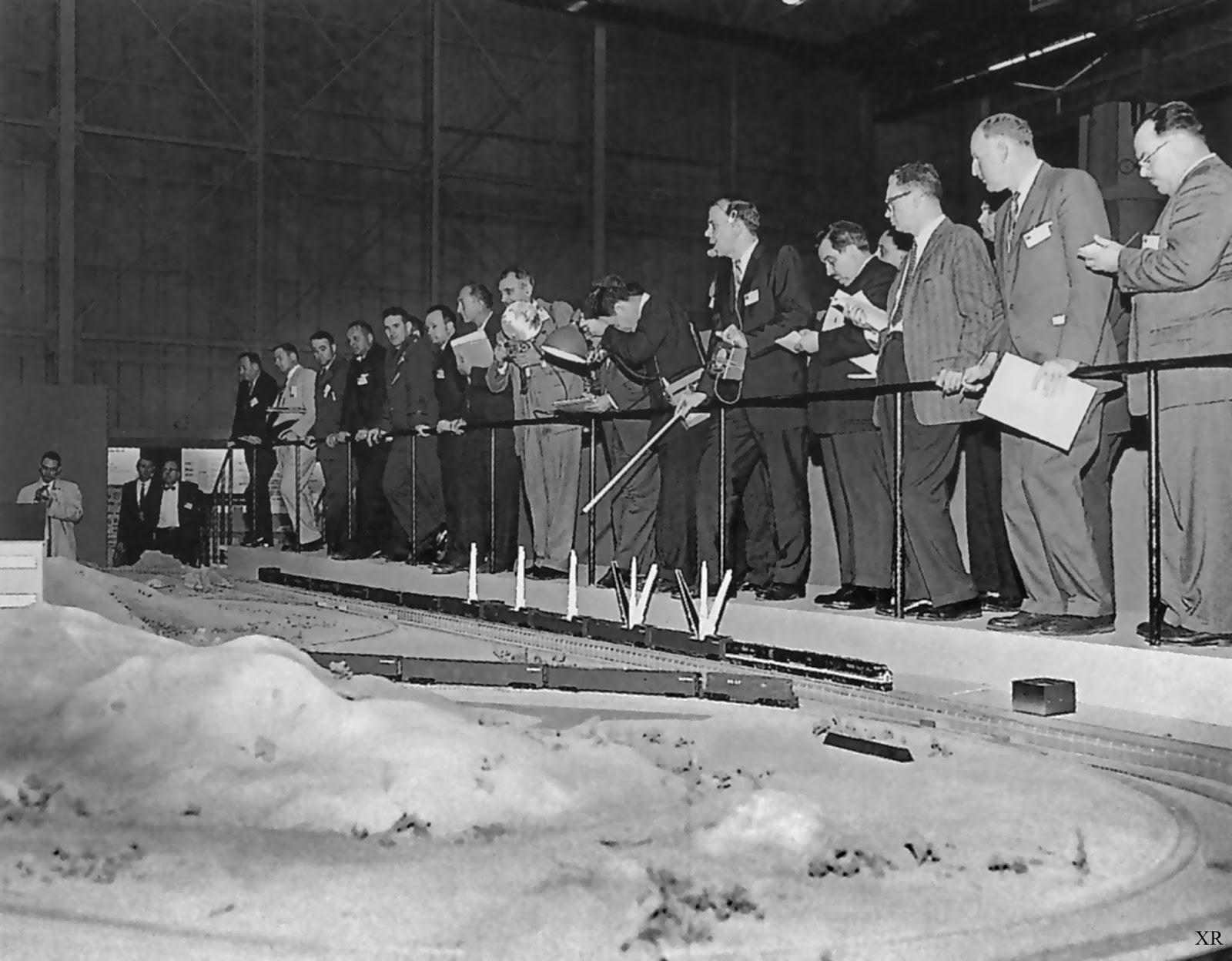 In the 1950s the USA had had plans for 30 trains, each with three Minuteman missiles but the plan was scrapped on the grounds of cost. 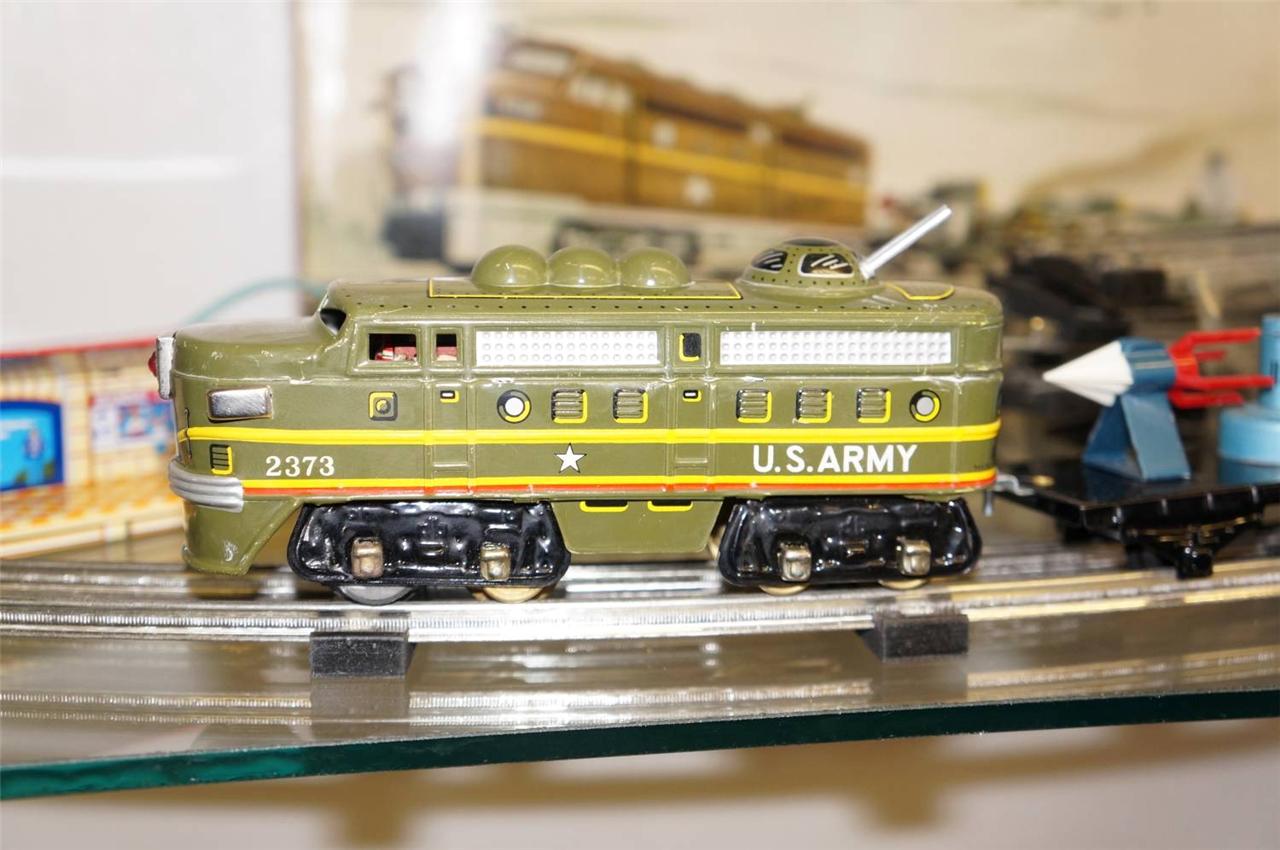 Bandai Atomic Toy Train - Tin - 1950 US Peacekeeper system
|
|
Related Links:
|
|
| FAIR USE NOTICE: This page contains copyrighted material the use of which has not been specifically authorized by the copyright owner. Pegasus Research Consortium distributes this material without profit to those who have expressed a prior interest in receiving the included information for research and educational purposes. We believe this constitutes a fair use of any such copyrighted material as provided for in 17 U.S.C § 107. If you wish to use copyrighted material from this site for purposes of your own that go beyond fair use, you must obtain permission from the copyright owner. | |
|
|

